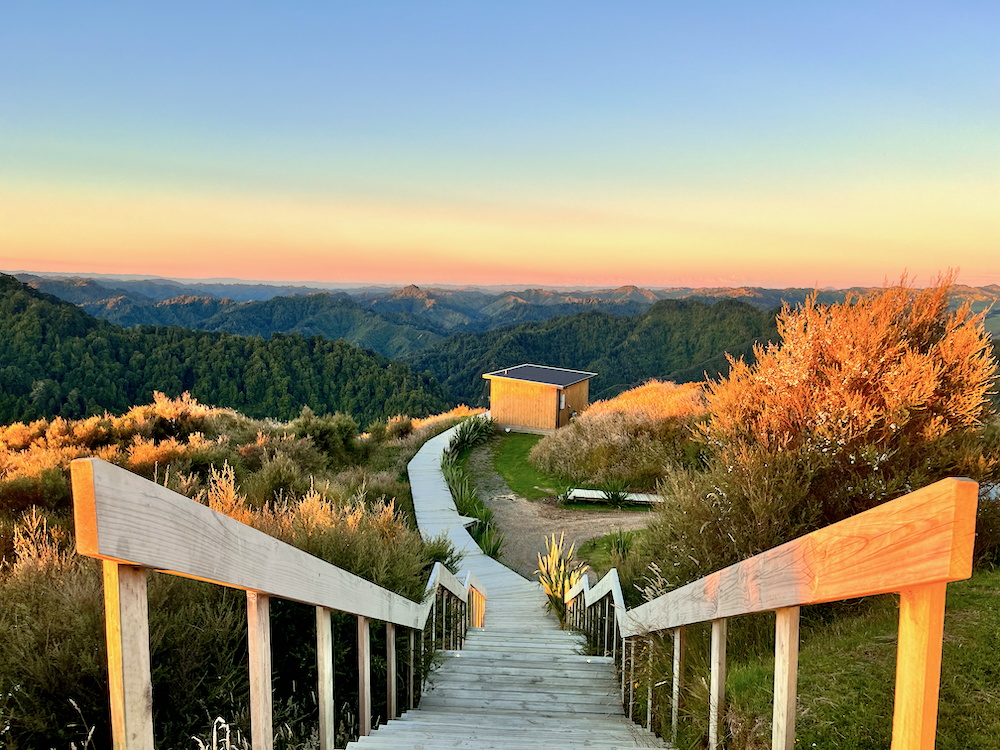
Watching the owner of Blue Duck Station deftly throw a large axe at a target and hit a bullseye was my first experience at this rustic holiday resort on North Island, New Zealand.
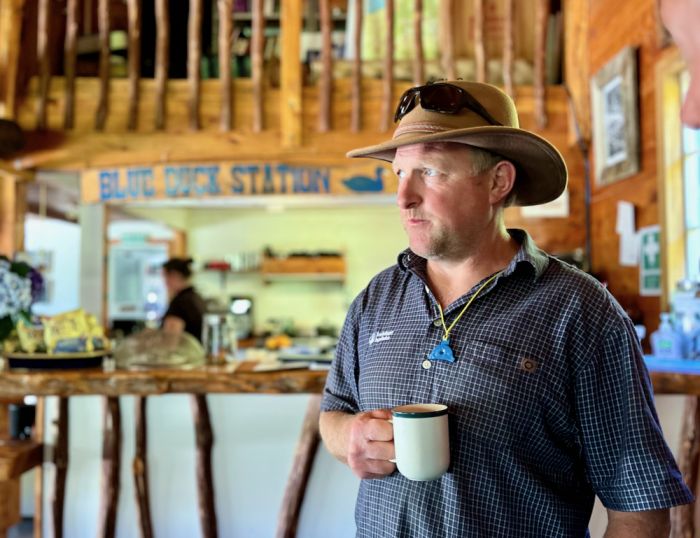
It wasn’t to be my last taste of the vast expanse of the Kiwi outdoors at this converted farmstead named after a rare and endangered bird living here on the northern border of Whanganui National Park. Before the sultry afternoon was over, my companion and I had enjoyed an exhilarating ride on an all-terrain vehicle along steep riverside ravines deep in the luscious bush and had gone for a canoe ride through a deep gorge below a rushing waterfall.
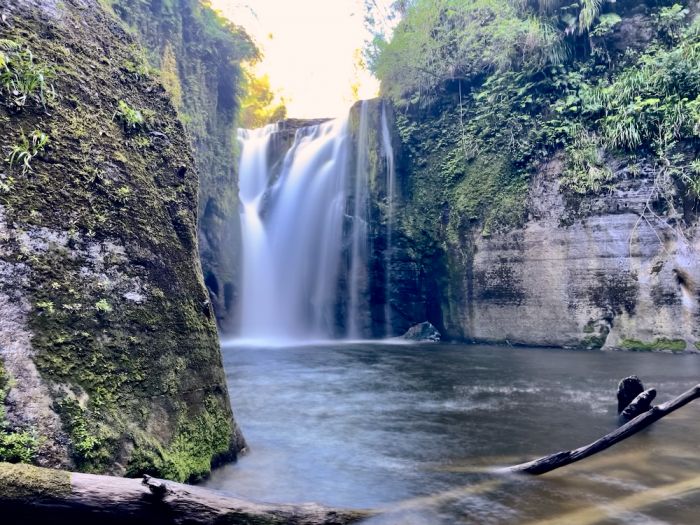
Reward for our sporting endeavors was an overnight stay overlooking the smooth forested slopes of Ngauruhoe, the triangular-shaped volcanic mountain made famous as Mordor in the ‘Lord Of The Rings’ trilogy and the jagged, snow-covered peaks of Tongariro. Not to mention the un-disputable highlight of our trip, a wonderful dining experience comprising a 12-course tasting menu prepared by talented British chef Jack Cashmore (33) at Blue Duck’s ‘top of the world’ restaurant, The Chef’s Table.
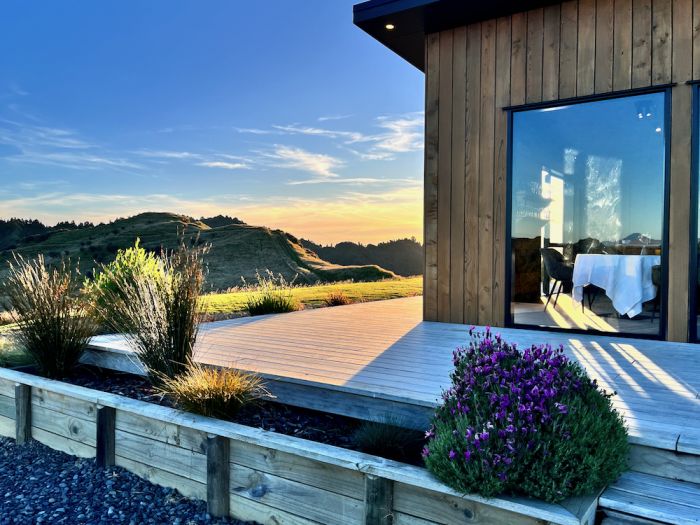
Dan and Sandy Steele launched Blue Duck Station a few years back on land beside the Whanganui River that they leased from his parents, then extended it to its present size, around 7,200 acres where they have become protectors of the blue duck (or whio in the native Maori language). Found only in New Zealand and once plentiful, now only 1,500 pairs remain, with 15 pair here along the fast-flowing rivers on the farmstead.
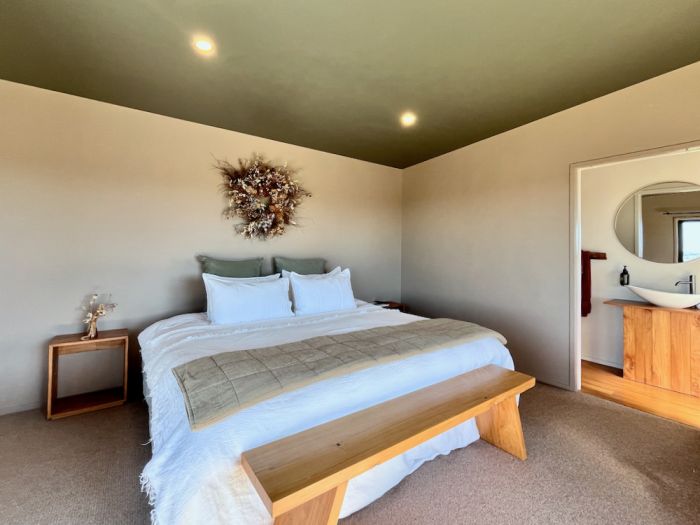
The Kiwi couple still rear livestock here including Hereford-Angus and Scottish Highland cattle, sheep and deer, as well as hosting around 1,500 bee-hives, with millions of bees producing more than fifty tonnes of honey in a good year.
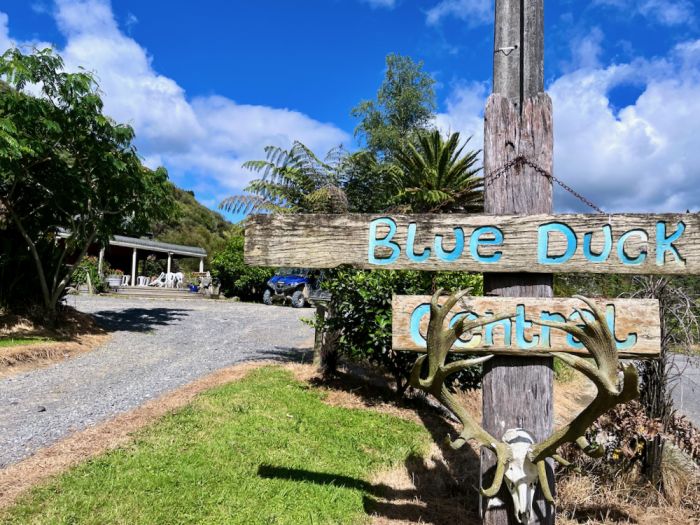
Tourism was always a key factor in Dan and Sandy’s strategy, with Blue Duck Station now catering for about 110 guests in lodges featuring decks and deerskin rugs and towel rails created out of polished manuka branches beside a cafe, as well as six guests hosted in three stand-alone lodges on the mountain top. The cafe features long wooden tables on the terrace and soft sofas inside with timber walls filled with memorabilia including paintings and photographs reflecting the station’s history.
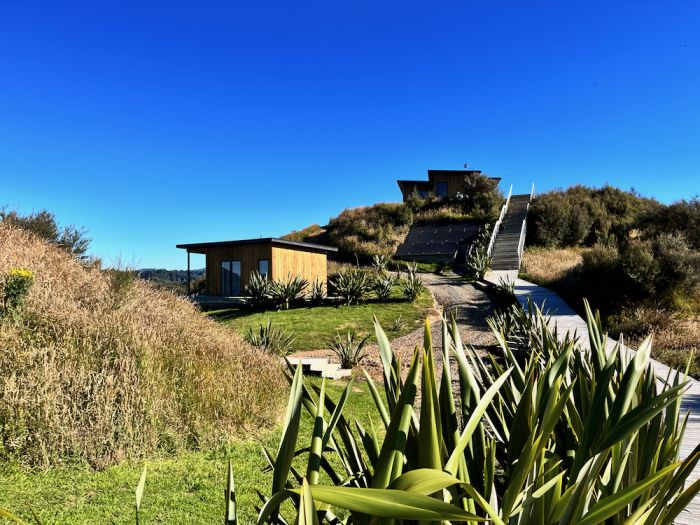
Guests can enjoy a wide variety of activities at Blue Duck Station including fishing, biking, four-wheel-drive bus safaris, clay-bird shooting, horse trekking, jet-boat rides, canoeing, hunting and bird-watching, to name but a few.
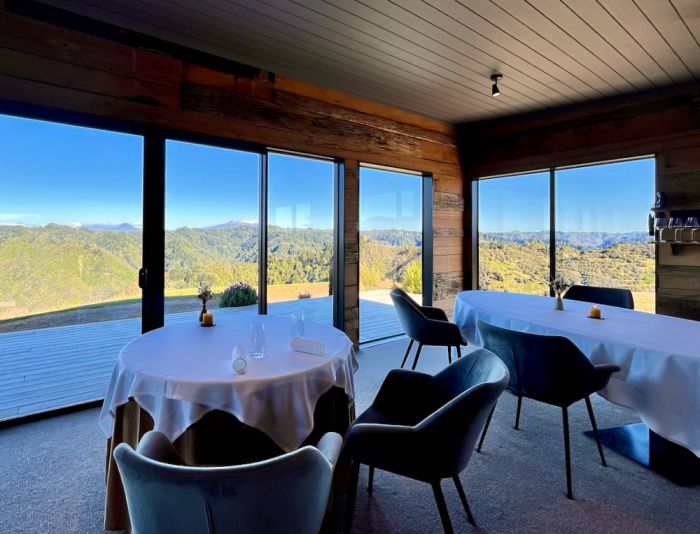
Our accommodation on top of the mountain was in one of the three Alpine-like wooden eco-lodges with all the mod-cons and floor-to-ceiling windows granting panoramic views over the surrounding countryside, memorable images enhanced by picture-postcard sunsets and sunrises.
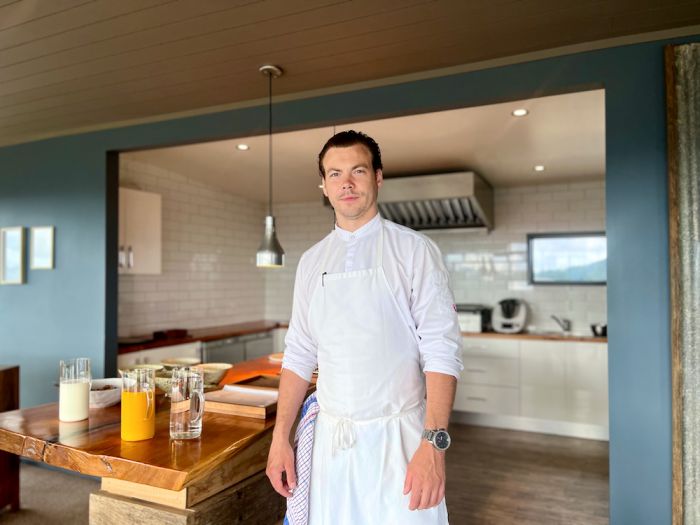
This is where we enjoyed a sumptuous dinner prepared by Cashmore from Staffordshire in a 12-seat restaurant. With New Zealand sitting plum in the middle of an active earthquake zone, perhaps it was appropriate that our amuse-bouche, served by friendly Clover Sykes from London, resembled a multi-colored, mini-tectonic plate, comprising thin layers of black radish, apple, nasturtium leaves and kombu seaweed, decorated with delicate white flower.
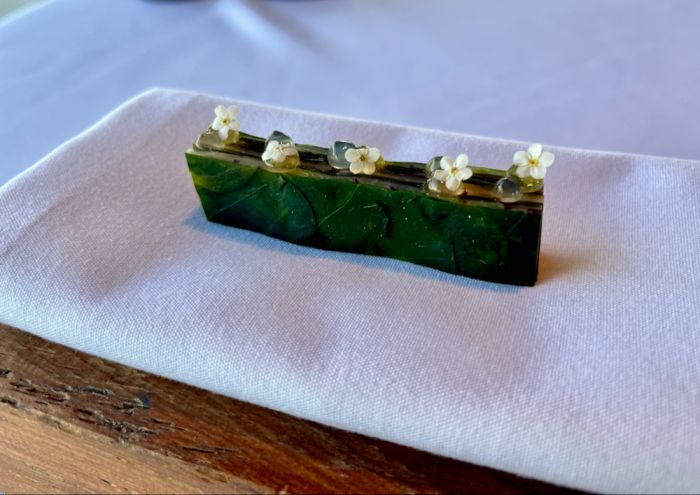
The next culinary offering was served in an inverted bowler hat, a blend of horseradish custard and salmon roe. My companion and I thoroughly enjoyed the tactile contrast between the warm creamy texture of the underlying base custard with the crackling feel of the roe from South Island which burst like bubbles inside our mouths as they released their dense flavor, all topped off with Japanese dashi poured gently from a delicate porcelain flask.
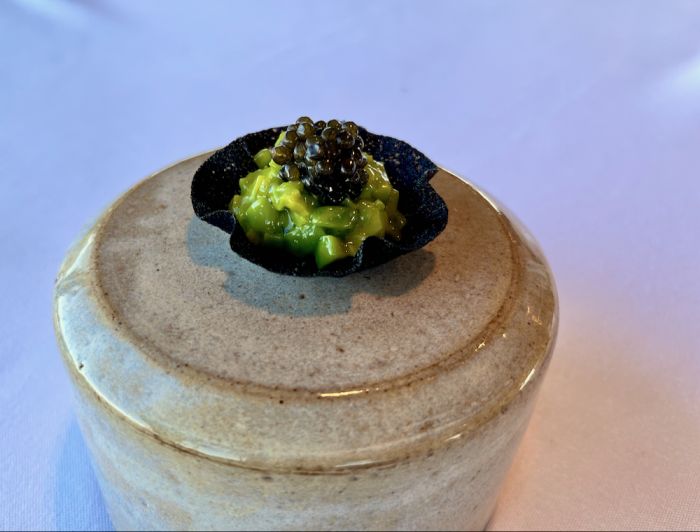
Jack’s international culinary experience ranges from England to Belgium and for him fine restaurants are those that “reflect the best of produce in their local areas.” A class example of his philosophy in action was one of his dishes centered around one of New Zealand’s ferns, also known as mamaku. We passed hundreds of them on the steep ride up the mountainside but never thought they could be eaten nor taste so wonderful. Jack cut the tender stems, poached them slowly then scooped out the jelly from inside and served it with caramelized whey, caviar and thyme flowers. Delicious silver pearls on a plate.
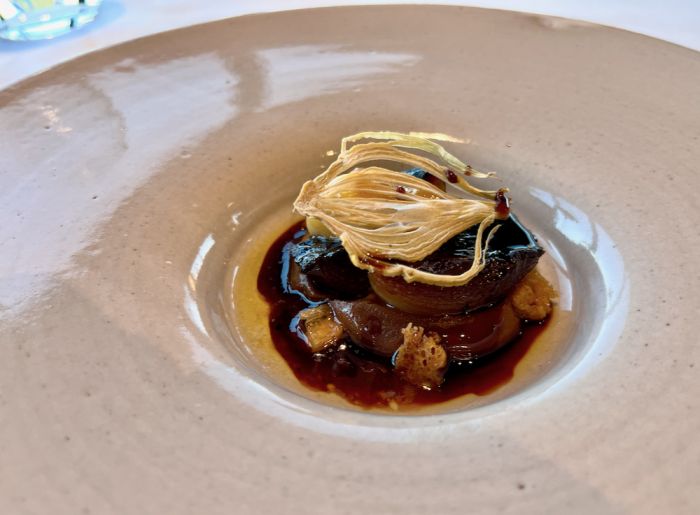
Our veritable feast also featured a series of creative dishes, including a black waffle colored with squid ink filled with broad beans, cured egg and caviar flavored with elderflower vinegar; fresh cheese and seaweed jam, fennel tops, lemon verbena and lavender, smoked tomato coulis and cherry tomatoes; slow-roasted onion broth with bone marrow and fennel heart; lamb loin with black garlic, red cabbage and pickled rose petals; and venison with beetroot, cherries and chocolate sauce emulsion.
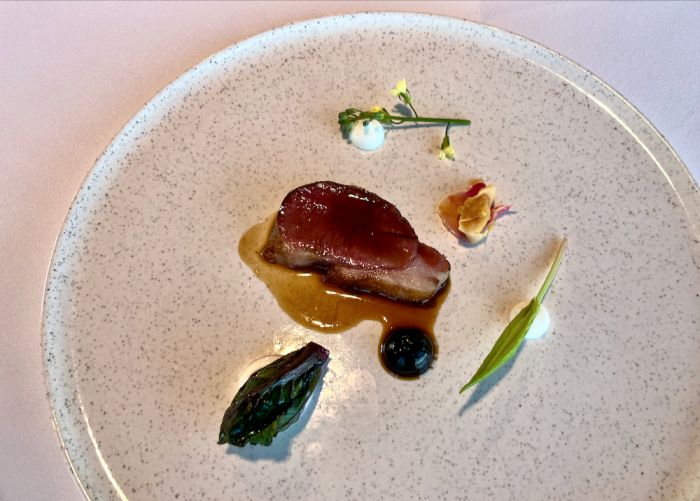
To illustrate his culinary skills further, Jack even introduced local spruce pine into a pre-dessert he created, granita with strawberries, meringue which reminded my companion of a marvellously re-interpreted pavlova, a popular dessert in New Zealand. A second pre-dessert simply named ‘milk and honey’ held its own surprises of rice pudding, caramelized white chocolate, olive oil gelee and milk zabaione. His dessert creations included a delicious spiced chocolate tart, lemon meringue and raspberry with kafir lime and pâte de fruit.
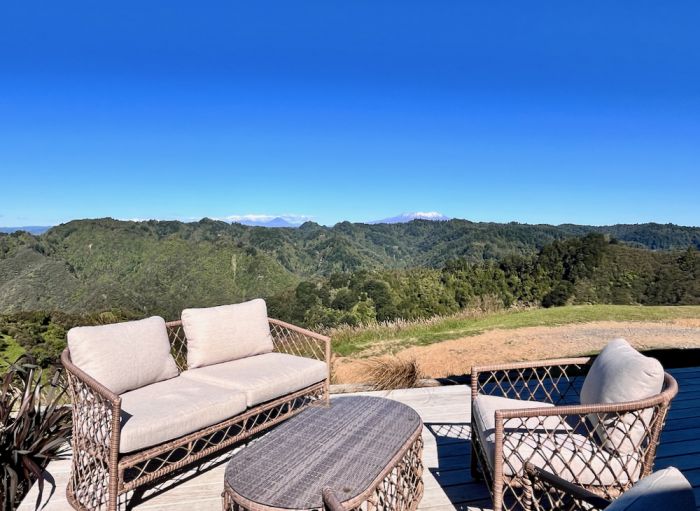
Drink pairings began with biodynamic farmed artisan cider by Eric Bordelet before extending to a variety of wines such as Grgich fumé blanc from California's Napa Valley and grand reserve pinot noir from the Calrossie Vineyard in Marlborough, our dinner finishing with a dry white Portuguese port from Niepoort and a sweet wine from Chateau Barouillet Monbazar.
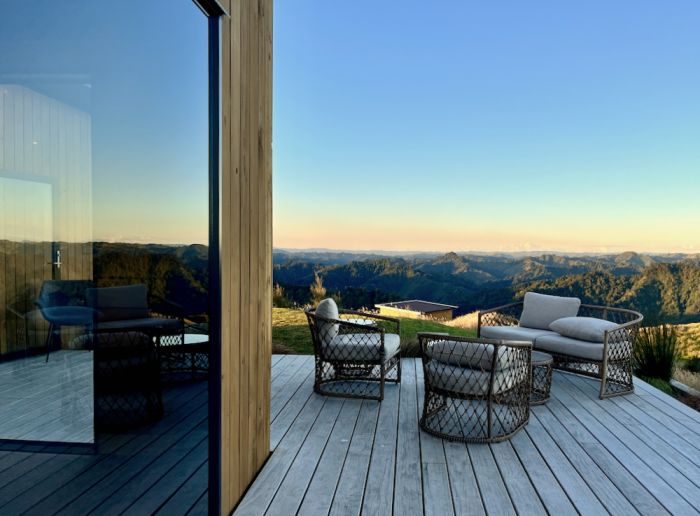
For both a gourmet food-tasting experience and a taste of New Zealand’s gorgeous countryside, Blue Duck Station should be high on your list and best enjoyed at 500 meters altitude surrounded by bush.









